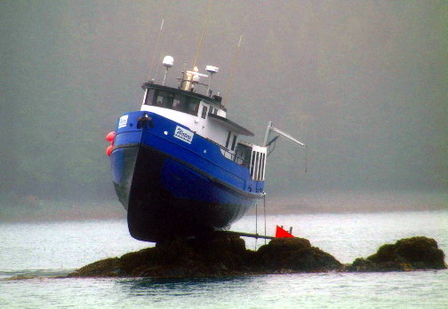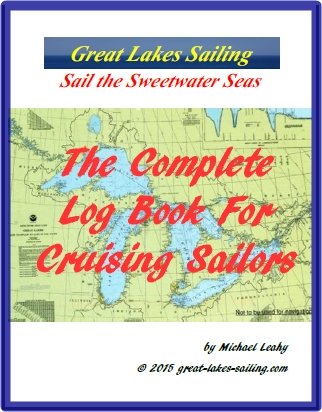
Seamanship
The Art and Science of Managing Your Boat
Seamanship is both the science and the art of handling a boat. Science
because so much of it is based on factual knowledge and specific skills
such as navigation, boat handling and ropework. Art because there is an
innate sense of creativity and feeling that is hard to put your finger
on but is present none-the-less such as sensing how your boat is going
to move when a particular wave strikes or sensing just what that
troubled sky might bring. The need for certain skills will vary with the
type and size of boat you have. But, this is a matter of scale. The
basics are necessary foundations to not only enjoy sailing but to do so
with safety.
And safety is the bottom line. As the quote from the Canadian Coast Guard Auxiliary Search and Rescue Crew Manual (Pacific Region)
says, the lessons of countless mistakes over thousands of years have
have been distilled into a set of traditions. Those traditions lie at
the heart of what we call seamanship. And a solid knowledge of
seamanship will hopefully prevent you from repeating the mistakes of the
past.
For an excellent precis on seamanship, here is Adm. Chester Nimitz' Letter to the Fleet following the weather disaster of Dec 18th, 1944. In that terrible storm, the United States Navy lost 3 warships sunk and another 28 damaged, 9 severely. Nearly 800 men lost their lives. It was one of the greatest losses in WWII in the Pacific Theatre – and from a natural event, not enemy action. Paragraph 8 is worth particular attention.
Seamanship refers to a number of areas. These areas include passage planning, navigation,
weather, rules of the road, (ColRegs) manoeuvring at dock, anchoring,
communications, marlinspike (ropework), passage planning and managing
emergencies. Some of these topic have been covered elsewhere on this
site under their own headings.
Passage Planning
A Passage Plan is a written plan you prepare in advance to record all of the necessary information for a safe sailing trip. Its purpose is to make you consider all aspects of the 3 essential parts of a voyage - the boat, the crew and the passage itself.
Not only is it very good seamanship to prepare such a Plan to ensure a more relaxed trip but the planning itself can be a fun way to prepare for the voyage. And this applies even for a short trip.
Click here to go to the section on PASSAGE PLANNING
Navigation
Navigation is the science and the art of accurately determining your position, identifying where you want to go, planning a safe route to get there and then following that plan to arrive safely.
The principal concepts we want to know are:
1. Where am I?
2. What direction am I going, or want to go?
3. where is my destination?
4. How long will it take me to get there?
Click here to go to the section on NAVIGATION
Weather
Weather is the real 'greatest show on earth'. Its free. Its happening all around us 24 hours a day. And, it lies at the very heart of sailing. Because of their size, the Great lakes have their own impact on the general weather systems. This section on weather facts and how weather works is designed to give you a practical, basic guide to the great weather engine that drives our climate.
Click here to go to the section on WEATHER
Rules of the Road – the “ColRegs”
The ColRegs is the well-known abbreviation for the Convention on the International Regulations for Preventing Collisions at Sea, 1972 . These 'rules of the road' were set out by the International Maritime Organization to reduce the chance of collisions by standardizing lights, signals and actions of vessels.
Click here for a summary of the COLREGS plus illustrations.
Docking
Many sailors can comfortably cruise in all weather, anywhere on the lakes but still get that knot in their stomach when contemplating docking, especially in gusty weather.
Click here to go to the section on DOCKING
Anchoring
Docks are not the only place you can end a day's sail. There are countless absolutely beautiful anchorages everywhere on the Great Lakes. Here is a summary of good anchoring techniques.
Click here to go to the section on ANCHORING
For 4,000 years mariners have gone to sea in ships
and boats and for 4,000 years a certain number of those mariners and
ships have not returned. During the history of seafaring, mariners have
made many mistakes and those that survive, learn to change their
behaviour. These lessons are translated over the years into traditions.
Old mariners pass on these traditions to young mariners.
Canadian Coast Guard Auxiliary (Pacific Region)
Search & Rescue Crew Manual
In all my years I've never seen the like. It has to
be more than 100 sea miles and he brings us up on his tail. That's
seamanship, Mr. Pullings. My God, that's seamanship.
Mr. Allen, Sailing Master
HMS Surprise
Master & Commander Patrick O'Brien
The Complete Log Book For Cruising Sailors
written by a sailor for sailors

a practical, easy-to-use yet thorough format to record all of the necessary information about your boat and any cruises you take – whether exploring home waters or voyaging to distant ports across the Great Lakes.
.
Click here for more details